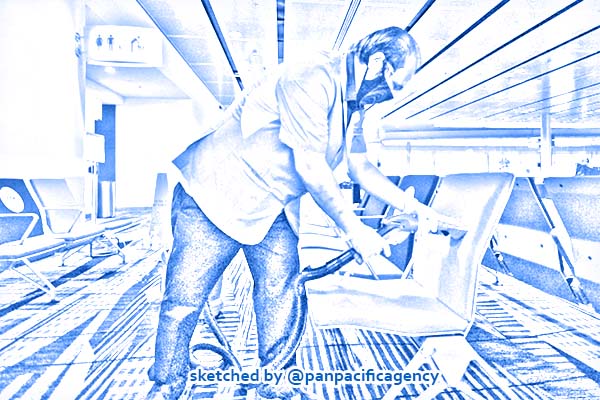Singapore moves closer to Hong Kong ‘air travel bubble’, considers opening borders unilaterally

The Transit Holding Areas will be put through deep cleaning and disinfection regularly. PHOTO: CHANGI AIRPORT GROUP. Sketched by the Pan Pacific Agency.
HONG KONG, Oct 6, 2020, SCMP. Singapore’s Transport Minister Ong Ye Kung on Tuesday signalled travellers from Hong Kong may soon be able to visit without being required to stick to a controlled itinerary or complete a 14-day quarantine, South China Morning Post reported.
During a 30-minute speech in parliament, Ong said Singapore had responded “positively” to Hong Kong’s intention to establish an “air travel bubble”.
“We hope to commence discussions with Hong Kong and other partners soon,” Ong said during a statement about recovery plans for the city state’s battered aviation sector and its national carrier, Singapore Airlines.
Almost 400,000 travellers from Hong Kong entered Singapore in 2018. Countries around the world have been rushing to establish bubbles to help airlines and tourism sectors recover from the debilitating effects of the Covid-19 pandemic that forced border closures and paralysed international travel.
Ong said Singapore would continue to consider similar arrangements with countries and regions deemed safe. Risks could be managed, he said, by setting a quota on the number of travellers and ensuring protocols for Covid-19 testing were followed. Although he mentioned Hong Kong twice, he did not say whether Singapore was in discussion with other potential partners.
Singapore’s Changi Airport is an established regional tourism hub and transit point for long-haul flights between Europe and Asia but the effects of the pandemic have been so acute that plans for a fifth “mega terminal” will be delayed by two years, Ong said. A fifth terminal would have increased passenger capacity from 85 million to 140 million annually but the airport is currently servicing just 1.5 per cent of its usual volume of passengers and 6 per cent of its usual number of flights each month.
After Changi Airport’s Terminal One first opened four decades ago, there were 318,493 passenger arrivals in July 1981. In August this year, there were 32,865 arrivals at the entire airport, although two terminals have been closed.
“We have decided to take a two-year pause so that we can have more clarity on the pace of air travel recovery before deciding how to proceed with the project,” Ong said.
The International Air Transport Association estimates 11.8 per cent of Singapore’s GDP is supported by the aviation sector and foreign tourists arriving by plane. Insisting that Singapore’s borders must reopen, Ong said the city state’s status as an aviation hub was “essential, even existential, to the health of the Singapore economy, to our jobs, and our future”.
Singapore’s reciprocal green lane arrangements with countries such as Brunei, China, Malaysia and South Korea require business and official travellers to adhere to a strict itinerary. However, Ong said Singapore could reopen its borders unilaterally without requiring other countries to reciprocate, having done so already with New Zealand, Brunei, Australia (excluding the state of Victoria) and Vietnam, although those countries discourage or restrict travel for their citizens.
“What we need to have is a mindset of generosity required of a hub,” Ong said, highlighting the fact that Singapore does not have a large domestic market to use as a bargaining chip with larger economies. Ong said reopening unilaterally would serve as a “standing invitation” to those economies to also accept travellers from Singapore once they were ready.
He pointed to the example of the UK, which allows Singaporeans to travel there without serving a 14-day quarantine. Singaporeans have nonetheless been advised against travelling to the UK, which is Europe’s worst-hit country with more than 500,000 infections. Meanwhile, travellers from the UK to Singapore must serve a 14-day quarantine in a designated hotel.
“But we appreciate the UK’s standing invitation,” Ong said. “So once their infection rate falls and becomes comparable to ours. We will lift restrictions quickly, which will effectively restore travel between our countries.”